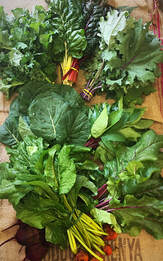 Who knew? We always knew our role in public health. The front line of health and wellness has always included farmers- the men and women that feed the soil, microorganisms, plants, and humans the vitamins, minerals, protein, complex carbohydrates, fiber and fats needed for health and wellness. Visit a farmers market, farm store or farm and you will find a farmer knowledgeable on the nutritional value of their harvest. As rates of Type 2 diabetes, heart disease and even cancer increase in young adults, farmers have become vital partners in public health. outreach. Local foods deliver the rich flavors colors and nutrients, especially complex carbohydrates , crucial for human health. Before you follow the recommendations of influencers and social media personalities that vilify carbohydrates, understand the key roles of complex carbohydrates in human physiology. Dietary fiber is a complex carbohydrate and the unsung and often overlooked hero when it comes to the health and wellness of your gut microbiome, GI tract and cardiovascular system. Soluble fiber found in beans, barley, peas , apples and carrots, help decrease sugar and fat absorption rates which can help lower blood sugar levels for everyone, including those living with pre-diabetes or diabetes. For patients with Type 1 and Type 2 diabetes, normalizing blood sugar levels can reduce the blood vessel damage to the brain , kidneys and heart as well as peripheral nerves. Who doesn't enjoy a nice bowl of black bean soup, oatmeal with apples, coleslaw or even carrot cake? Insoluble fiber found in beans, potatoes and leafy green vegetables, passes through the digestive tract with little breakdown from digestive enzymes, or stomach acid. This undigested fiber adds bulk to bowel movements, helps prevent constipation and with fermentation forms butyrate, an energy source for colon cells and the gut microbiome. Early research has shown insoluble fiber to reduce the risk of colon cancer and in some cases, decrease side effects from chemotherapy. As you can see, complex carbohydrates are not the enemy. Instead, diets high in ultra processed carbohydrates -cookies, chips, donuts french fries, and sodas- now contribute to increasing rates of preventable illnesses seen previously primarily in older adults. As a result, many from Gen Z now have a front row seat to family members, friends and loved ones living with the pain and complications from chronic and sometimes, preventable, illnesses. For this generation, food is not medicine. Food is a delicious tool for preventing illness before medicine is necessary. This is also a goal for our CSA. Our fruit and veggies in your rich home home -cooked meals can help grow strong families and strong.community members Local food for Local families. " I'm the one, not the two and my name is " Sijuade Oluwanifemi Adeboyejo. After an interesting and new age birthing experience involving a yoga ball, hot showers, and hair braiding, my first grandson, Sijuade, entered this world on July 31. His name is steeped in history and a Yoruba tradition that instills in him the hope for a bright and prosperous future that centers God and family. The joyful and loving celebrations from his grandparents, aunts, uncles, cousins and family friends from around the globe added to this unforgettable day. The youngest member of our family was born on July 31 and within a week, his naming ceremony was held at the home of his proud Nigerian grandparents. This was my first tie attending a naming ceremony, and the experience reinforced the need for community celebrations of life. Naming ceremonies do just that. They continue a tradition that showers children with love, and welcomes them to a growing community. Family and friends gathered to celebrate the blessing of Siju's ( She-ju) life and to speak into existence our hopes for a future filled with love, health, purpose and joy. During the naming ceremony , he was given at least 10 names, including Oke, which in the Yoruba language describes his veiled birth also known by the medical phrase of en caul. And after the ceremony, like in most cultures, a celebratory feast and music followed to welcome and thank the invited guests. Now to the food. The feast included jollof rice, efo riro, baked chicken, moi moi, plantains, puff puff and stewed fish. For me, the efo riro was the hidden gem on the menu, The ripe tomatoes, hot peppers, fish, dried crayfish and onions transformed the spinach into a spicy and smoky melt -in -your -mouth dish. After searching and practicing with multiple recipes, efo riro has become a staple in our home and will become a staple during our New Years' dinners along with black eyed peas. To help the new and sleep deprived parents, for the first few months I became personal chef to Siju's father , big sister and ,especially Siju's mom, Chima, to help her produce the healthiest breastmilk possible. This experience reinforced my belief that most parents, with children, especially the parents of newborns, need the support of their extended family and friends. Baby showers, and gender reveal parties are fun, but in most countries around the world, grandparents, aunts, uncles and other functional members of the village continue to support new parents with meals and household chores.
Cooking for my growing family has been a joy, an opportunity to cook familiar and new recipes, and an opportunity to taste and learn about new foods. Friends and family generously contributed fresh, homemade meals which were greatly appreciated. From egusi soup to Chapman cocktail, I became familiar with more and more traditional Nigerian cuisine - all packed with spices, antioxidants, lean meats, fish, leafy greens and vegetables. While the Mediterranean diet has been extensively researched and promoted as the gold standard for a healthy diet, more research is needed into the diets from other parts of the globe. After enjoying so many foods from Nigeria, Sierra Leone, Togo, Senegal and Liberia, foods filled with leafy greens, complex carbohydrates and spices, the African Heritage Diet, especially beneficial for the lactose intolerant among us, hits the mark when it comes to flavor and meeting the nutritional needs of children and adults. Especially the vitamin folate. Folate, Vit B9, also known as folacin, is critical for cell growth, especially in early pregnancy to decrease the risk of neural tube and birth defects. One cup of spinach contains almost 100 mcg of RDA of the recommended 400 mcg for men and women over 19 years of age. Pregnant and breastfeeding persons require 600 mcg and 500 mcg , respectfully. With a side dish of 1/2 cup of the New Year's favorite, black-eyed peas , another 100 mcg of folate is added to your plate. While the term "African Heritage Diet " references a vast continent with a diverse history of people and cuisines, a common finding is the presence of complex carbohydrates - cassava, plantain, cocoyam, yucca, millet, sorghum and maize. The metabolism of these fiber rich foods stimulates the growth of beneficial bacteria in the gut microbiome, and produces butyrate, an energy source for colon cells. Ongoing lab and clinical research increasingly notes the benefits of fiber rich diets for beneficial bacteria growth and possible colon cancer prevention. The foundation of the African Heritage Diet also includes a variety of green, leafy vegetables like malabar spinach, avuvo, jute leaf, sweet potato greens, amaranth and water leaf. Green leafy greens provide the daily vitamins, antioxidants and micronutrients but the culinary skills of the gifted hands that prepare dishes like Liberian potato greens, efo riro, groundnut stew, or malabar spinach and black-eyed pea curry, make eating your daily vitamins simple. A recent study noted that over half of U.S. 1 to 5 years of age children don't eat one vegetable daily and 30% didn't eat a fruit daily. The increasing numbers of children diagnosed with hypertension , Type 2 diabetes , obesity and NAFLD-nonalcoholic fatty liver disease- is fueled by diets packed with sugar/sugar substitute beverages, energy drinks, ultra-processed foods and calorie rich/nutritionally poor meals from restaurants, corner stores, convenience stores and vending machines. For 5 A DAY CSA, 2023 will be the year where we explore recipes that embrace the traditional foods of Africa with a focus on West Africa, in particular. With our harvest of sweet potato greens, okra, spinach, malabar spinach, avuvo, jute leaf , Paul Robeson heirloom tomatoes and hot peppers, this year promises to be a year that you won't want to miss. 2021 has been an eventful year. From the loss of my 95 year old father to the birth of my first grandson, reminded me of the Maze song, Joy and Pain. Gratitude has been the recurring message that I will take into the New Year. I will be forever grateful that my father lived 95 years and lived his life on his terms. He lived his early life on a cotton farm in Paris, Texas, as the youngest of 10 children. His parents, Julia and James Reese, moved from Wedowee, Alabama along with other families to Texas to find better economic opportunities and a safe environment to live and raise a family. Despite the violent history of Paris, Texas , my grandfather and uncles each purchased 100 acres of land where they grew, and harvested cotton along with cattle, pigs, chickens and vegetables. He often spoke about his father slaughtering a hog on the coldest day of winter to place in the smokehouse and his favorite part of that day, fresh pig liver roasted on an open fire. On Saturdays, he and his father traveled into town to pick up the Chicago Defender and Pittsburg Courier and also, eat a hamburger. I also remember my Dad sitting in his rocking chair eating and enjoying a southern classic- a tall glass of buttermilk and cornbread. Each spoonful reminded him of his mother who prepared the dish with fresh buttermilk. Like many other farming families of that time, my grandparents practiced regenerative agriculture before it was "newly discovered". Any food waste fed the compost pile or farm. animals. Canned vegetables, smoked meats and fresh fish provided food security throughout the year for my uncles and aunts. But life on the farm was hard and not my father's passion; education and reading were. The study of history was the passion of my father and grandfather, and as soon as he was eligible, he left the farm to join the army. As a veteran, the GI bill helped him attend Wiley College as a student and then a faculty member. In 1963, he completed his Ph.D. in history from the University of Southern California. After completing his Ph. D, he returned to Texas and joined the faculty of Texas Southern University in Houston, Tx. ultimately became the chairman of the history department. After retirement, he taught part time at TSU while also enjoying his daily walks, and conversations with former colleagues. It was his love of food that I will remember and miss. Sunday dinners with pan-roasted quail, or cornish hens, holiday meals with his oyster dressing, summer gatherings with barbecue ribs, chicken and sausage, and family gatherings where his gumbo in the yellow gumbo pot was the main course.
I will forever be grateful for his love, consistency, common sense,sound advice and compassion for others. For all that have lost a loved one , let their memory be a blessing and their recipes enjoyed and generously shared with the next generation. All is well. There is nothing like growing your own watermelon. Most years we try a new watermelon variety to compare the taste , size and growing requirments. This year we grew a Nancy watermelon, a heritage variety known for its white seeds, thin rind and sweet flesh. With the rain during the past few weeks, we were able to pick a melon that weighed about 25 lbs. Many more are growing and hopefully with the rain won't be more water than melon. How did we know it was ready? Watermelons don't ripen after harvest so if your melon isn't sweet it's due to the variety , too much water from rainfall or irrigation, or an early harvest. We looked for a dry tendril and the telltale dull thump on percussion to determine readiness. The brown curly tendril wrapped around the leaf stem is the first clue. The yellow underbelly of the melon is another, and the dull sound when thumped is pretty reliable. You can gently thump you chest to see the best pitch your melon should have. Thump your forehead to hear what an unripe melon sounds like- higher pitch. Ice cold with a pinch of salt and this melon is a keeper. Saving the seeds to plant more next year.
This is definitely a nourish well fruit with Vitamins C, A, B6, lycopene, and citrulline . The Nancy watermelon is not commonly found in stores due to its size ( about 25 lbs), thin rind ( easily damaged with shipping) and hard white seeds. Their loss is our gain.
If only there were a heart shaped herb for the shining light that briefly graced the Earth.
The shock and devastating loss of actor Chadwick Boseman at the age of 43 from colon cancer is still unbelievable. His journey began in South Carolina with a pivotal stop at Howard University and then on to Hollywood where his leading roles in 42, Get On Up, Marshall, Civil War, Black Panther , 21 Bridges and Da 5 Bloods will live forever in our collective memories and on screens big and small. His portrayal of the Marvel superhero Black Panther,King T'Challa of Wakanda, along with a cast of exceptional actors, delivered a self reflective, dignified, historic performance from a man described by many as humble, courageous, disciplined ,multitalented and regal . Colon cancer is the third most common cancer in the US, the second leading cause of cancer deaths, and for an unknown reason, rates are increasing in younger adults with a disproportionate burden on African -Americans. African Americans continue to have the highest incidence and mortality rates from colon cancer with ongoing research to understand the predisposing factors. Age >50, genetics, inflammatory bowel disease such as ulcerative colitis, family history of colon polyps and cancer, and specific lifestyle factors all increase the risk for precancerous colon polyps and colon cancer. Lifestyle risk factors - tobacco , alcohol use, obesity , lack of physical activity, low fiber, high fat and processed meats -are also contributing risk factors for colon cancer. After colon cancer is diagnosed, an increased fiber intake may increase survival rates. Fiber rich foods- vegetables, food and whole grains- can all help maintain an ideal weight and lower your risk of colon cancer. The benefits of fiber along with adequate water intake are well known. Soluble fiber helps maintain a sense of fullness and satiety while insoluble fiber aids in food transit through the gastrointestinal track. The diagnosis of colon cancer has evolved over the years with a new home screening option to detect blood and abnormal DNA in a stool specimen- a sign of precancerous colon polyps and cancerous colon tumors. Cologuard is a home screening test that detects blood and DNA from precancerous and cancerous polyps and tumors. A virtual colonoscopy is a radiographic study that uses a CT scan and X-ray images to recreate 3D images of the colon for review by a radiologist. The gold standard screening and diagnostic test for colon cancer is a full colonoscopy which offers a direct view of the colon and the possibility for colon polyp removal and biopsy. A colonoscopy is typically performed by a gastroenterologist in an outpatient center under intravenous sedation; in 99% of cases you will not remember any of the procedure. What age should you undergo a screening colonoscopy or home screening? Symptoms such as change in bowel habits, noticeable blood in the stool, on toilet paper or in the toilet, family history of colon cancer and the presence of inflammatory bowel disease all warrant a discussion with your primary care physician and possible referral to a gastroenterologist. Self-advocacy with your physician and, in some cases, your insurance company is a necessary skill to navigate the current US healthcare maze. Colonoscopy screening is recommended at age 45 by the American Cancer Society for those without symptoms or increased risk factors. A screening colonoscopy is then recommended every 3 years if there are no increased risk factors. If there is a family history of colon cancer, screening colonoscopy is recommended at age 40 or 10 years younger than the age of diagnosis of your family member according to the American Cancer Society.. A colonoscopy is may also be recommended based on symptoms, physical exam findings, physician recommendation, and other individual risk factors. Recommendations for colon cancer screening can change based on risk factors and symptoms and physical exam findings. Once a diagnosis is made, the cancer is staged based on whether it is localized to the colon , Stage 1, spread to the colon wall, Stage 2, spread outside the colon wall , Stage 3 spread to the lymph nodes and Stage 4, spread to distant organs and tissue. Colon cancer treatment varies with each patient and each stage of the cancer. In the 21st century, specific tumor markers can help oncologists determine the best course of chemotherapy if needed. Life after a diagnosis of colon cancer varies depending on the stage but a survivorship care plan can help outline recommended tests, appointment, lifestyle changes, and understand possible treatment side effects. Nourish Well. Eat more veggies, fruit, whole grains like barley, oatmeal, brown rice, nuts and seeds. Move more. Learn about the health of other family members and share information that may be helpful.Develop a plan to quit smoking. Limit alcohol usage. Below, Dr. Rachel Issaka, a gastroenterologist at the Fred Hutchinson Cancer Center at the University of Washington, discusses the increasing incidence of colon cancer in Black Americans and the importance of colon cancer screening.
|

On the farm
Same Hands,
Same Goals, Different Knives Growing Healthy Families Archives
February 2023
Categories
All
|
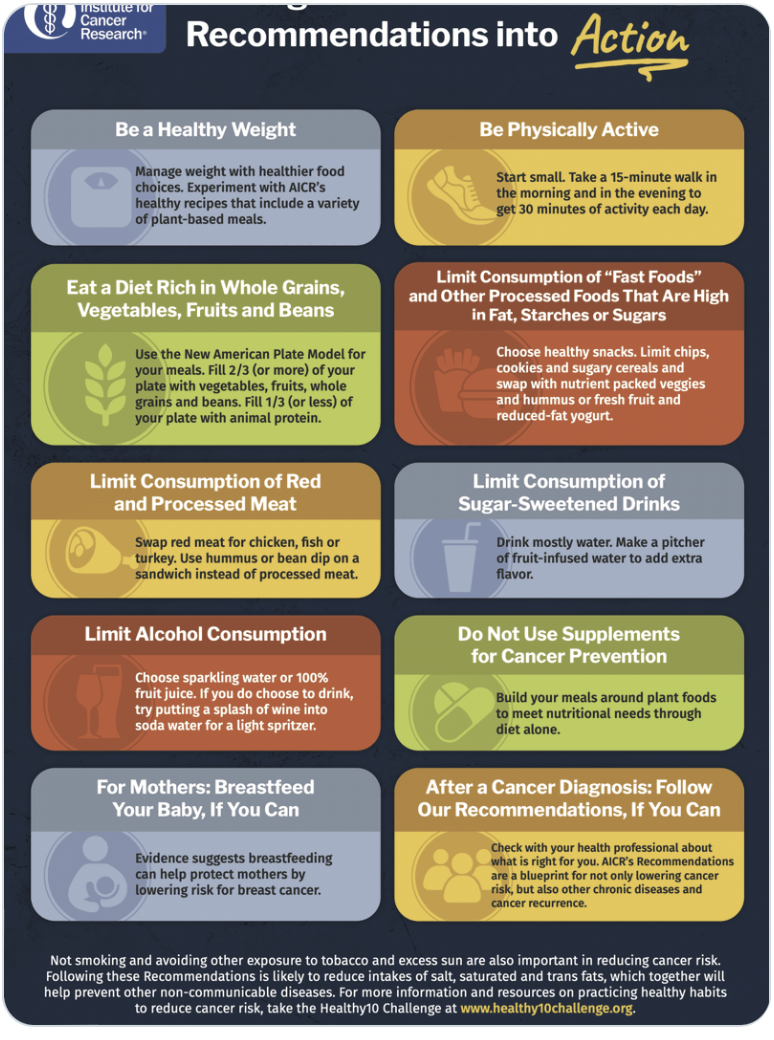

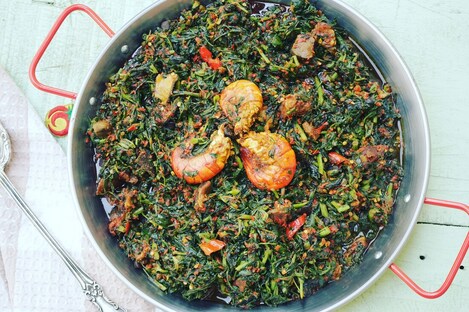

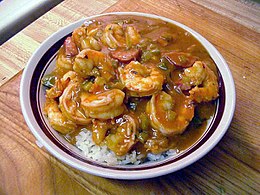
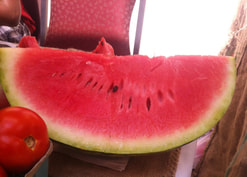


 RSS Feed
RSS Feed